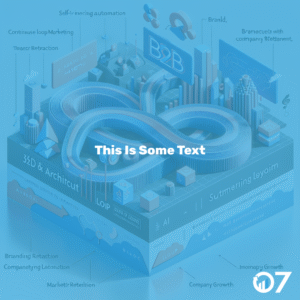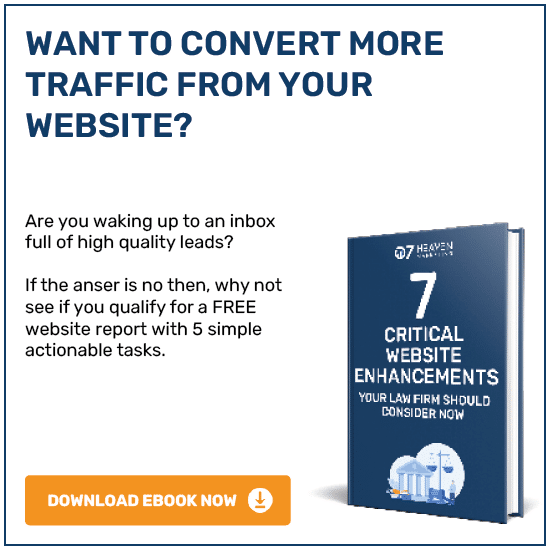Competitive Matrix Guide: Understanding your business landscape is crucial to stay ahead of the competition. In this guide, we’ll break down the competitive matrix guide, helping you navigate the market effectively.
I remember when I first started my business. I knew the basics of marketing and a little about sales. What I didn’t know was the depth of my competitive business landscape. This knowledge gap wasn’t pretty, as many competitors quickly surpassed me.
Turns out I’m not alone — because if you’re reading this post, you want to beat your competition. One tactical way to do this is by creating a competitive matrix.
How? You run a competitive analysis and document your findings using a competitive analysis template.
A competitive matrix guide helps to identify competitors and lay out their products, sales, and marketing strategies in a visual format. When I did this, I learned about my market position, how to differentiate myself, and how to improve my processes so they outshined competitors.
Let’s dive into what a competitive matrix is and review some templates and examples.
Competitor Matrix Types
Before we dive into the world of competitive matrices, it’s important to understand that there are different types you can use.
– Competitive Advantage Matrix: Helps you understand the differentiation and profit potential of your business.
– SWOT Analysis: Assesses the strengths, weaknesses, opportunities, and threats of your business.
– Competitive Profile Matrix: Compares your business against competitors based on key success factors and overall performance.
– Sales Matrix: Gauges the potential of sales opportunities.
– Product Feature and Benefit Matrix: Evaluates how your offer matches customer needs.
– Price Matrix: Helps you determine the pricing for your product strategically.
Competitive Advantage Matrix
The competitive advantage matrix is over a decade old, but it’s still relevant today. With this matrix, I can analyze my company’s competitive advantage by assessing based on volume production and differentiation.
This matrix has two axes — vertical and horizontal. The vertical axis evaluates the number of opportunities available for achieving a competitive advantage, while the horizontal axis measures the potential size of the competitive advantage.
Using this information, the competitive advantage matrix is segmented into four quadrants:
– Stalemate industries: Few opportunities to differentiate and the impact on revenue is small.
– Volume industries: Few opportunities to differentiate, but the impact on revenue is high.
– Fragmented industries: Many opportunities to differentiate, but limited impact.
– Specialized industries: Many opportunities to differentiate with great profit potential.
Testing Out the Competitive Advantage Matrix
Below is how different businesses you know might fit into the four quadrants of the competitive advantage matrix.
Stalemate (Few advantages with small potential)
Example: Generic local store retailer
A small and local retail store that sells everyday products like groceries might be in this category. Since this store operates in a highly competitive market and sells similar products to others, there is little differentiation, reducing the competitive advantage. Growth potential is also limited because of the low profit margin of the business.
Volume (Few advantages with great potential)
Example: Walmart
Walmart’s economies of scale and vast distribution network are competitive advantages with huge profit potential. The ability to offer low prices also attracts a high volume of customers.
Fragmented (Many advantages with small potential)
Example: Etsy
Etsy is a niched online marketplace for handmade, vintage, and unique goods. Its diverse product range, large number of independent sellers, and thriving community of users give it a competitive edge. However, this advantage has limited potential since products appeal to specific and smaller customer segments rather than a mass market.
Specialised (Many advantages with great potential)
Example: Apple
Apple’s innovative products, user experience, strong brand loyalty, and ecosystem of superior devices and services give it enormous competitive advantages. These advantages have significant potential, allowing Apple to command premium prices and maintain a strong market share across multiple product categories, from smartphones to laptops and wearables.
SWOT Analysis
A SWOT analysis is one of my go-to techniques for assessing how my business compares to competitors. The acronym stands for strengths, weaknesses, opportunities, and threats. I like the SWOT framework because it is simple but incredibly powerful when you dig into it.
SWOT lets me evaluate the internal and external factors that can affect the current and future potential of my business. By identifying these elements, I create a space to capitalize on my strengths, improve my weaknesses, take advantage of opportunities, and eliminate threats.
For example, if my company has an excellent profit record, this is a strength. If my company offers a small variety of products to its customers, this could be a weakness.
But how do I determine what information goes into my SWOT analysis?
Below are some questions I consider.
Strength Questions
The following questions help me discover where my company excels. This information will help me attract and draw in new customers as well as maintain existing ones.
What;
– are my assets?
– is my unique selling proposition?
– resources do I have?
– makes me better than my competitors?
– do my customers like about my product/services?
– Do I have a strong customer base?
Weakness Questions
It’s difficult for my business or any organization to improve if there’s no system to determine its weaknesses. To remain competitive, I must discover the cracks in my business and find a way around them.
– What do my customers dislike about my products/services?
– What areas do my competitors have an advantage in?
– Do I or my employees lack knowledge or skill?
– What resources do I lack?
– Do I make enough profit?
Opportunity Questions
Monitoring my competition is necessary; however, watching for opportunities will give my business a competitive advantage. These opportunities can come from both monitoring my competitors and industry trends.
– What are the current trends?
– What is my market missing?
– Is there available talent that I could hire?
– Are my competitors failing to satisfy their customers?
– Is my target market changing in a way that could help me?
Threat Questions
Threats can come up within a business at any time. These can be internal or external factors that might harm my company and its operations. Identifying these threats will help my business run efficiently.
– Who are my competitors?
– Has there been an increase in competition?
– What are the obstacles I am currently facing?
– Are my employees satisfied with their pay and benefits?
– Are government regulations going to affect me?
– Is there a product on the market that will make mine outdated?
As shown by these questions, a SWOT analysis matrix can help your company identify elements that are often overlooked.
Competitive Profile Matrix
A competitive profile matrix is a tool that any company can use to compare its strengths and weaknesses to industry competitors. To use this matrix, I’ll need four elements: critical success factor, weight, rating, and score.
Critical success factors are areas that will determine my success. Examples are brand reputation, range of products, and customer retention.
After selecting these factors, I will assign a weight to each one. The weight measures the importance of each factor, ranging from 0.0 (low importance) to 1.0 (high importance). I recommend that you avoid assigning a weight of 0.3 or more, as most industries thrive based on many factors.
This high value can decrease the number of factors you’re able to list in your matrix. When assigning weight, I need to ensure the sum of all weights equals 1.0.
The third step is to rate my company and its competitors from 1 to 4 in each critical success factor where:
– 1 = Major weakness
– 2 = Minor weakness
– 3 = Minor strength
– 4 = Major strength
The last step is to calculate the score.
First, I’ll multiply the weight of each critical success factor by the rating. After this step, I’ll add each company’s score to get the total score.
This, when compared to my competitors, will show if I’m behind the curve, ahead of the curve, or on par with competitors in my industry.
Testing Out the Competitive Profile Matrix
A competitive profile matrix example might look like this:
Critical Success Factors:
– Brand Reputation
– Customer Retention
– Product Range
Weights:
– Brand Reputation: 0.4
– Customer Retention: 0.3
– Product Range: 0.3
Ratings
– My Company: 3, 4, 2
– Competitor A: 4, 3, 3
– Competitor B: 2, 2, 4
Scores:
– My Company: (0.4*3) + (0.3*4) + (0.3*2) = 3.1
– Competitor A: (0.4*4) + (0.3*3) + (0.3*3) = 3.6
– Competitor B: (0.4*2) + (0.3*2) + (0.3*4) = 2.6
From this, I can see that Competitor A is ahead, and Competitor B is behind.
Sales Competitive Matrix Guide
A sales matrix is a tool for gauging the urgency and viability of sales opportunities. It evaluates potential customers’ interest in my business against their fit for my services.
For instance, when I send out cold emails to potential customers, I am not 100% concerned about the open rate. What I am concerned with is the reply rate. Of course, if anyone on my list doesn’t respond, I follow up.
After getting a response, I want my prospect to fall into any of these categories within the sales matrix.
With this simple matrix, I get enormous benefits, such as:
– Insights into what I should do and when.
– Not getting stuck by sending content and promotions to bad-fit prospects.
– Not wasting valuable time that could be redirected elsewhere.
The best part? I can now use my energy and resources to pursue prospects who are a good fit and interested, making selling easier.
Product Feature and Benefit Competitive Matrix
The product feature and benefits matrix evaluates how my offer matches customer needs. It’s weighted by its importance versus its perceived distinction or advantage. When using this matrix, features will fall into the following categories:
– Irrelevant: Low importance and low distinction.
– Overinvested: Low importance and high distinction.
– Key liabilities: Low importance and high distinction.
– Key differentiators: High importance and high distinction.
If I am building a product, this information tells me what features to keep, what features to get rid of, and where I might save money.
Consider an iPad. Say Apple spends much of the manufacturing budget to produce a high-quality camera, only to find out that most users don’t even use it.
The camera has a high perceived distinction, yet it’s of low importance to iPad users. This information would tell Apple that they overinvested in this feature and could potentially reduce it to save costs in the future.
The price matrix is useful for deciding any business’ pricing strategy. Often, this is based on its product innovativeness and the availability of competitors.
This matrix is like the competitive advantage matrix because companies can only price their product based on the edge they have.
In the price matrix, there are four quadrants:
– Skimming: Best for new and innovative products with little to no competition.
– Premium: Works for luxury products where unique benefits or exclusivity appeal to customers.
– Economy: Ideal for price-sensitive customers.
– Penetration: Used to enter a competitive market with the aim of gaining market share quickly.
When creating a pricing matrix, I’d recommend you go from:
– Penetration to economy
– Skimming to economy
– Premium only (requires marketing budget to raise awareness)
To improve on it further, check what your competitors did and see if you can do the same or better.
Note: Unlike the other matrices on this list, a price matrix is a customer-facing competitive matrix type. You are creating it for your potential customer. So after deciding on your pricing strategy, go further with pricing tiers.
It’s common to have two or three levels. Once you’ve named them, create a short description. Depending on the industry, you might find it easier to include a few features associated with the category.
Once you do, list the prices. If not, create a call-to-action (CTA) for your potential customer to contact you for a quote.
Remember, as you build your tiers, the price will increase with each one. To stay on par with the perceived value, offer additional features or benefits to justify the cost.
The Benefits of a Competitive Matrix
Competitive matrices are great because I can use them to compare any characteristics of my company with those of a competitor.
Sometimes these matrices will be more visual (like a competitive analysis graph), and sometimes it’s just an Excel document with the information listed in columns.
The goal of the competitive matrix is to see at a glance the competitive landscape and my position in the marketplace. This will help me see gaps and hone in on my unique value proposition.
A competitive matrix can also be a great way to brainstorm new service ideas or, if you sell a product, get new ideas for tools or features you hadn’t considered before.
You might even come out of it with ideas for improving your content marketing strategy. You can use a competitive matrix for a lot of reasons.
Then, after figuring out what to do with the information, document your ideas, develop KPIs, and regularly conduct this analysis to stay current with your strategy.
How to Find Competitor Data
The internet has democratized access to information. As such, you can easily find information about your competitors if you look at the right places online.
Here are some places I check when researching my competitors:
– Google
– Competitor’s website
– Sitemap
– Social media accounts
The process will be different for every business. But generally, I find these online and physical outlets will be helpful for gleaning information about your competitors:
– Google
– Competitor website
– Website sitemap
– Social media accounts
– Yahoo Finance
– Crunchbase
– SimilarWeb
– Angellist
– SEC Filings
– YouTube
– Brochures
– Trade shows
– Newsletters
How to Present Competitive Matrix Analysis Data
During my time at a B2B content marketing agency, we always presented data to clients. It was always “here is what your competitors are doing” and “here is what we recommend.”
To do this, we always included set elements to present our data so it told a story that stuck:
– Know the audience you’re presenting to. It’s okay to have different presentations for different audiences.
– Use quality graphics. Whether it’s a matrix template, a screenshot, or an image, ensure it has high resolution.
– Use competitor logos. Visual impact is key. Use logos to help your audience know the brand you’re referring to.
– Show the product. Include your audience’s asset, which helps them connect the data you’re sharing to the outcome they can expect.
– Maintain consistency. Don’t present A about Competitor 1 and then jump to B about Competitor 2. Discuss one thing about all competitors before discussing the next.
– Be factual. Present where your client’s competitor is thriving and where they are falling short. This gives the client an obvious opportunity for what they can swoop in on immediately.
No Competition, No Progress
Innately, competition feels unpleasant; however, that’s not all it has to be. It can lead to growth, make us look deeper into our business, and improve.
Competitive matrices are great tools to help you uncover how you’re different from your competitors. Three that I really like are the competitive advantage matrix, SWOT (for its simplicity), and the sales matrix.
These — and the other matrices — show areas of improvement and where we can excel. If you’re having trouble evaluating your company’s position in your industry, use this article and the above tools to help.
For more insights, visit our blog or contact us via email at info@07hm.co.uk or telephone 01702 410663.





